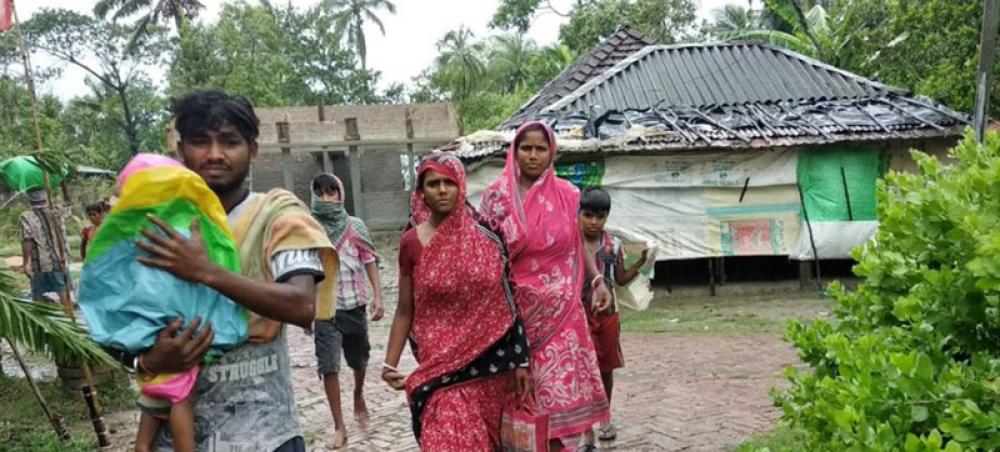Just Earth News | @justearthnews | 25 May 2020

The UN chief António Guterres commended the governments and people of India and Bangladesh on Saturday, for their life-saving efforts ahead of devastating Cyclone Amphan, and for the effective relief effort, wishing those survivors injured and affected by the disaster, a speedy recovery.
In a statement, the Secretary-General expressed his sadness at the loss of dozens of lives due to the most powerful storm to form in the Bay of Bengal, that packed powerful winds, slamming into the vulnerable coastal area along the border between the two nations, compounding the on-going COVID-19 crisis, and compromising efforts to maintain physical distancing.
Jens Laerke, spokesperson for the UN humanitarian affairs office (OCHA), said on Friday that Cyclone Amphan had impacted some 10 million people in Bangladesh, killing at least 25 there, and more than 70 in India. Half a million families may have lost their homes, he added.
Deadly mix of cyclone, COVID-19
The storm caused unprecedented damage across the historic India city of Kolkota, cutting off power supply to cities and towns, many of which are working to contain the COVID-19 pandemic, where there are more than 30,000 confirmed COVID-19 cases in Bangladesh and 432 deaths, according to latest figures from the World Health Organization (WHO).
The Bangladesh government evacuated around two million people before the storm hit, Mr. Laerke said, and more than 12,000 cyclone shelters had been set up with COVID-19 prevention equipment, including masks, sanitizers, soap and handwashing facilities.
About one million people had also been evacuated in India. According to WHO figures, there are more than 125,000 coronavirus cases there, with 3,720 deaths reported.
On Friday, the Indian Prime Minister, Narendra Modi, announced a $132 million emergency relief package, after travelling to the region to survey the damage.
First responders, communities praised
“The Secretary-General commends the governments, first responders and communities for their pre-emptive work to make people safe ahead of the storm and to meet their immediate needs afterwards”, said the statement from the UN Spokesperson’s Office. “The United Nations stands ready to support these efforts.”
The Secretary-General expressed his “solidarity with the people of India and Bangladesh as they face the impact of a devastating cyclone while also responding to the impacts of the COVID-19 pandemic.”
WFP team conducting assessment
Elisabeth Byrs, from the World Food Programme (WFP), told journalists on Friday a team was conducting a Rapid Needs Assessment. While most crops had been harvested already, early reports suggest that there was damage to fisheries, particularly smallholder shrimp farmers.
WFP had prepositioned food stocks, including high energy biscuits for 90,000 families, in affected areas and extra food stocks could also be made available and ready for distribution, if needed.
The Rohingya camps had been largely spared from damage when Cyclone Amphan made landfall in Bangladesh and India on 20 May, however a direct hit from a cyclone had the potential to be devastating, said the agency.
The UN refugee agency’s Charlie Yaxley (UNHCR) said that in Cox’s Bazar, home to around a million Rohingya refugees from Myanmar, 118 shelters had been destroyed and 1,423 had been damaged, affecting just over 7,000 Rohingyas refugees in the settlement. Of that number, 555 had been moved to temporary shelters or were staying with relatives while their homes were repaired.
‘Textbook example’ of good preparation
Clare Nullis, for WMO, the World Meteorological Organization, said the disaster mobilization for the cyclone had been “a textbook example of how it should be done. The forecast provided by the Indian Meteorological Department, which served as WMO’s regional specialized meteorological centre and provided forecast for the entire basin, “had been spot on”.
The information that it provided had been the basis for the massive evacuation and the community response, Ms. Nullis added.